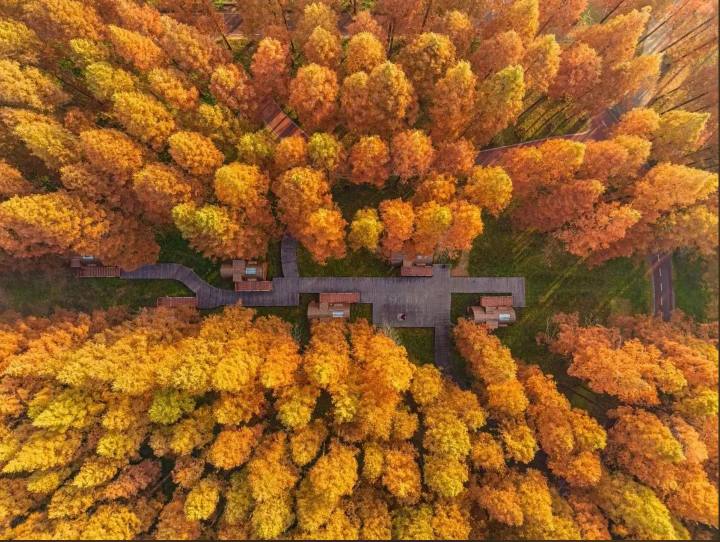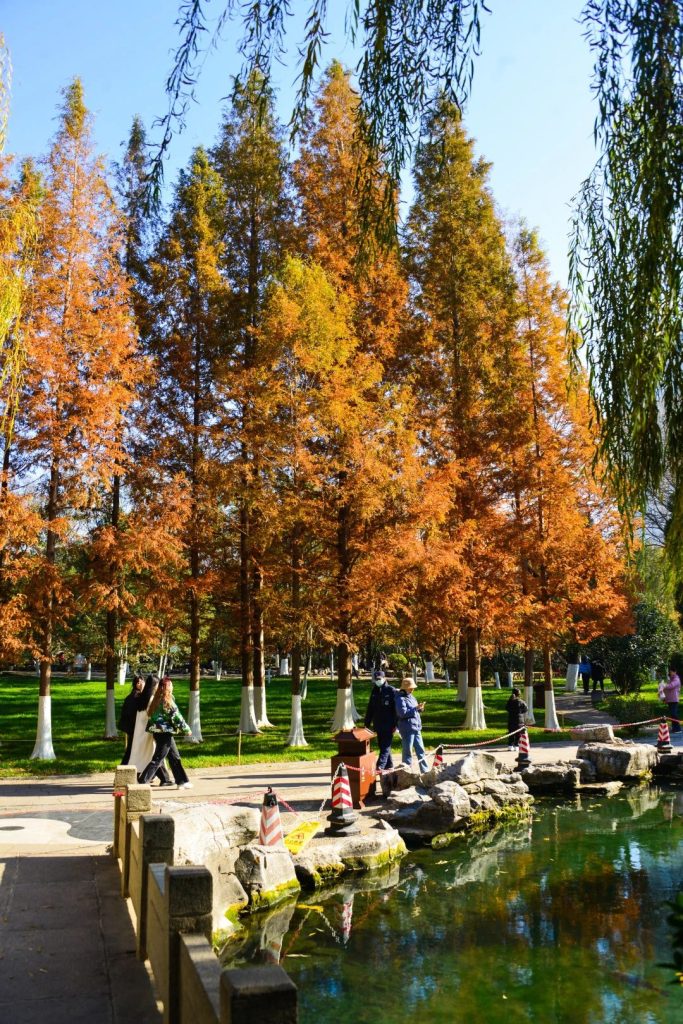Why Your Transplanted Dawn Redwoods Keep Dying: 5 Critical Mistakes (And How to Fix Them)
The Dawn Redwood (Metasequoia glyptostroboides), a renowned “living fossil,” is celebrated for its hardiness against cold and wet conditions. Yet, it often becomes surprisingly delicate after transplanting. The truth? It’s not the tree – it’s the technique! Here are the top 5 pitfalls and science-backed solutions.

1. The Fragile Root System: Handle with Extreme Care
Dawn Redwood roots are notoriously sensitive. Their deep taproot and sparse lateral roots are easily damaged during digging. Severed roots drastically reduce water uptake – like trying to run a marathon with a severed artery. This is critical for larger specimens: an undersized root ball (less than 8 times the trunk diameter) and rough handling during transport are often fatal.
✓ Professional Fix: Transplant with a large, intact root ball (8-10 times trunk diameter), securely wrapped in burlap. Transport covered with a tarp and keep moist via misting.
2. Transplanting at the Wrong Time: A Recipe for Failure
The optimal transplant window is during dormancy: late fall (after leaf drop) to early spring (before bud break). Like a hibernating bear, the tree’s metabolism is slowest then. Forcing summer transplants for project deadlines leads to severe dieback (“dry branch retraction”) as the tree exhausts itself.
✓ Professional Fix: Transplant in early spring (March-April in colder zones, February in warmer zones). If summer transplanting is unavoidable, choose cool, overcast/rainy days. Implement strict protocols: deep watering at dawn/dusk plus root stimulators and nutrient injections via trunk infusion.
3. Soil Shock: Suffocation and Starvation
Dawn Redwoods present a paradox: they thrive in moist soil but despise waterlogging, and tolerate poor soils yet need adequate nutrition. Common mistakes are fatal – chronic overwatering causing root rot, or planting in compacted, infertile subsoil leading to severe decline.
✓ Professional Fix: Amend the entire planting pit with high-quality topsoil mixed with coarse sand or perlite (30-50%) for critical drainage. Ideal soil moisture: forms a ball when squeezed but crumbles easily. Apply well-composted organic fertilizer twice yearly (spring & fall).
4. Skipping Support: Wind Rock is a Silent Killer
A newly transplanted Dawn Redwood is vulnerable, like a post-surgery patient. Without proper staking, spring winds (especially in northern regions) can tilt or topple it. Worse, constant rocking shears off fragile new roots, dooming establishment.
✓ Professional Fix: Install a sturdy quadpod support system anchored to 1/3 – 1/2 the tree’s height. Use wide, flexible tree straps (never wire/cord directly on bark) to prevent girdling and abrasion.
5. Ignoring Pests & Diseases: Invisible Threats
Don’t be fooled by their resilience! Dawn Redwoods face significant risks:
- Foliar Diseases: Cercospora leaf spot causes unsightly “freckling” and defoliation.
- Boring Insects: Longhorn beetle larvae (especially Semanotus spp.) tunnel into trunks; termites can hollow the base.
Early symptoms are easily missed, leading to catastrophic damage.
✓ Professional Fix: - Apply protective tree wrap or reflective whitewash in fall/winter (insect/disease barrier + sunscald protection).
- Spray Bordeaux mixture preventatively (May-August) against Pestalotiopsis fungal blight (“red tip blight”).
- Inject systemic insecticide immediately upon detecting bore holes/frass.

3 Essential Life-Saving Techniques:
- Pre-Transplant Pruning: Aggressively thin branches by 25-40% to drastically reduce water loss stress.
- Trunk Infusion Therapy: Administer specialized nutrient/water solutions via IV bags directly into the trunk during critical establishment.
- Radial Trenching/Aeration: For existing stressed trees, carefully excavate radial trenches from the trunk (outward 1-2ft deep), backfill with amended soil/compost, or install vertical aeration tubes to improve gas exchange and water penetration.

 Fiddle Leaf Fig Dropping Leaves? Yellow Leaves Fix Now! (Causes & Quick Solutions)
Fiddle Leaf Fig Dropping Leaves? Yellow Leaves Fix Now! (Causes & Quick Solutions)  5 Common Backyard Mistakes Killing Your Garden (And How to Fix Them)
5 Common Backyard Mistakes Killing Your Garden (And How to Fix Them) 